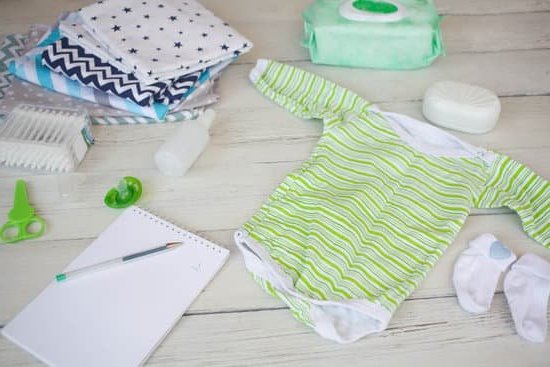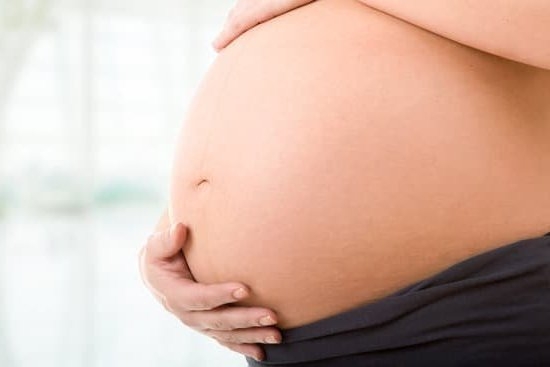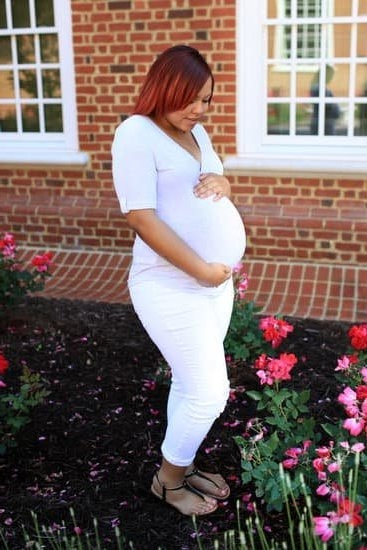How long is horse pregnancy? The gestation period of a mare is a crucial aspect of breeding and equine reproduction. Understanding the duration of horse pregnancy is essential for proper prenatal care, ensuring a healthy foal, and preparing for the arrival of the new addition to the herd. This article explores the various aspects of horse pregnancy, from reproductive anatomy to prenatal care, labor, and postpartum care.
The reproductive system of a mare plays a significant role in determining the length of pregnancy. By understanding the physiological processes involved in horse reproduction, breeders and caretakers can better prepare for the arrival of a new foal. This section will delve into the intricacies of horse reproductive anatomy, shedding light on how it impacts the duration of pregnancy.
Additionally, this article will discuss the breeding process and how pregnancy occurs in horses. From mating to conception, understanding the steps involved in horse breeding provides valuable insight into managing and monitoring a mare’s pregnancy. By grasping these fundamental concepts, individuals can make informed decisions regarding their horses’ reproductive health and well-being.
Understanding how long a horse is pregnant is crucial for proper prenatal care and management. From signs of pregnancy to necessary nutrition and care, this article will provide comprehensive guidance on supporting a pregnant mare throughout her gestation period.
Horse Reproductive Anatomy
The reproductive system of a mare is a complex and intricate structure that is vital for the process of pregnancy and foaling. Understanding the anatomy of the mare’s reproductive system is important for horse breeders, veterinarians, and anyone involved in the care of horses.
Reproductive Organs
The reproductive organs of a mare include the ovaries, oviducts, uterus, cervix, and vagina. The ovaries are responsible for producing eggs, or ova, which are released during the estrous cycle. The oviducts then capture the ovum after it is released from the ovary and transport it to the uterus. The uterus is where the fertilized egg will implant and develop into a fetus if pregnancy occurs.
Estrous Cycle
Mares are seasonally polyestrous, meaning they have multiple estrous cycles within a breeding season. The estrous cycle typically lasts around 21 days, with variations among individual mares. During this cycle, the mare will exhibit behavioral and physical changes indicating her readiness to breed.
Hormonal Regulation
The reproductive system of a mare is regulated by various hormones such as estrogen, progesterone, follicle-stimulating hormone (FSH), and luteinizing hormone (LH). These hormones play crucial roles in controlling ovulation, preparing the uterus for pregnancy, maintaining pregnancy, and regulating behavior during estrus.
Understanding the anatomical structures and physiological processes of a mare’s reproductive system provides valuable insight into how horse pregnancy occurs and why it is essential to properly care for pregnant mares.
Gestation Period
During the gestation period, a mare carries her foal from conception to birth. It is important for horse breeders and owners to have a good understanding of how long horse pregnancy lasts in order to provide appropriate care and support for the pregnant mare. On average, the gestation period for a horse is approximately 11 months, or 340 days. However, this can vary slightly depending on the individual mare and breed.
Here are some key points regarding the gestation period of a horse:
- Duration: The average length of pregnancy for a horse is around 11 months or 340 days.
- Variations: While this is the general timeframe, some mares may give birth slightly earlier or later than this timeframe.
- Breed Differences: Certain breeds of horses may have different gestation periods. For example, ponies typically have a shorter gestation period compared to larger breeds.
It is important to note that accurately predicting the exact foaling date can be challenging, as there can be variation in individual mares and pregnancies. Factors such as age, health, and previous foaling history can also play a role in determining the length of a horse’s pregnancy. Therefore, it is crucial for horse owners to monitor their pregnant mares closely and provide them with appropriate prenatal care.
In addition to understanding the general timeframe of horse pregnancy, it is essential for owners to recognize and monitor signs of impending labor as they approach the expected due date. This includes observing physical changes in the mare’s body and behavior, as well as preparing for the upcoming foaling process.
By being knowledgeable about the average length of time a horse is pregnant and staying attuned to their mare’s needs, owners can ensure that they provide the best possible care throughout this vital stage of the horse’s reproductive cycle.
Signs of Pregnancy
Understanding the signs of pregnancy in a mare is crucial for horse owners and breeders to ensure the well-being of both the mother and the foal. One of the most common physical changes in a pregnant mare is weight gain, as her body prepares to support the growing fetus.
This can often be accompanied by an increase in abdominal size as the pregnancy progresses. Additionally, the mare’s udder may start to enlarge and develop in preparation for lactation after birth.
Behavioral changes can also indicate pregnancy in a mare. Some pregnant mares may exhibit mood swings or changes in temperament, becoming more protective or irritable. Others may show signs of nesting behavior, such as digging or rearranging bedding, as they prepare for foaling. It is important for horse owners to be attentive to these behavioral changes and provide proper care and attention to pregnant mares.
Another significant sign of pregnancy is a change in the mare’s estrous cycle. Once pregnant, she will no longer go into heat or display signs of fertility, such as receptive behavior towards a stallion. This cessation of estrus is an important indicator that a mare may be carrying a foal.
| Average Horse Gestation Period | 11 Months |
|---|---|
| Change in Estrous Cycle | Cessation of heat behavior |
| Physical Changes | Weight gain, enlarged udder |
| Behavioral Changes | Mood swings, nesting behavior |
Prenatal Care
During pregnancy, a mare’s nutritional needs change significantly as she supports the growth and development of the foal. It is vital for horse owners to understand how to provide proper prenatal care and nutrition for a pregnant mare to ensure the health and well-being of both the mare and the foal.
One important aspect of prenatal care for a pregnant mare is ensuring she receives regular veterinary check-ups. These check-ups allow the vet to monitor the progress of the pregnancy, address any potential complications, and make any necessary adjustments to the mare’s care and nutrition plan. Additionally, it provides an opportunity for the vet to administer vaccinations, deworming, and other preventive healthcare measures that are crucial for maintaining the mare’s health during pregnancy.
In terms of nutrition, a pregnant mare requires a balanced diet that meets her increased energy, protein, vitamin, and mineral requirements. High-quality forage should form the basis of her diet, supplemented with a concentrate feed specifically formulated for pregnant mares.
It is essential to provide access to clean water at all times and monitor her body condition score regularly throughout gestation to ensure she is maintaining an appropriate weight. By prioritizing proper prenatal care and nutrition for a pregnant mare, horse owners can help ensure a healthy pregnancy and a strong start for the foal.
Labor and Delivery
When a mare is nearing the end of her pregnancy, it’s important for horse owners to be prepared for the labor and delivery process. Understanding the stages of labor and knowing what to expect during foaling can help ensure a smooth and successful delivery for both the mare and the foal.
Stage 1: Preparatory Stage
The first stage of labor in a mare typically involves subtle signs that she is preparing to give birth. This may include restlessness, sweating, frequent urination, and a decrease in appetite. The mare may also start to separate herself from her herd or seem more agitated than usual. During this stage, it’s crucial to monitor the mare closely for any changes in behavior or physical signs that labor is progressing.
Stage 2: Active Labor
The active stage of labor is when the actual delivery of the foal takes place. This stage usually begins with the rupture of the placenta, followed by visible contractions as the foal moves into position for birth. Once the foal’s hooves are visible, it’s important to allow the mare to proceed naturally but be ready to intervene if necessary.
Most mares will lie down during this stage, although some may choose to remain standing. It’s essential for horse owners to provide a safe and quiet environment for the mare during this critical time.
Stage 3: Afterbirth
After the foal is delivered, the third stage of labor involves the passage of the placenta. This should happen within a few hours after foaling. It’s crucial that all placental tissue is expelled from the mare’s uterus to prevent infection and complications. Horse owners should carefully monitor this process and contact a veterinarian if there are any concerns about retained placenta or other postpartum issues.
Understanding each stage of labor and being prepared for what to expect during foaling can help horse owners provide proper care and support for their pregnant mares. Knowing how long horse pregnancy lasts is just one aspect; being knowledgeable about labor and delivery is equally important in ensuring successful outcomes for both mare and foal.
Postpartum Care
After a mare has given birth, it is crucial to provide proper postpartum care for both the mare and her foal. This period is critical for their health and well-being, as they transition from pregnancy to nursing and recovery. The mare should be monitored closely for any signs of complications, while the foal requires special attention to ensure proper growth and development.
The postpartum period for a mare typically lasts around 7-10 days, during which she will undergo physical and hormonal changes. It is essential to provide a clean and comfortable environment for the mare to rest and recover from labor. Proper nutrition, including high-quality hay, grains, and a balanced diet, is also important during this time to support her recovery and milk production for the foal.
As for the foal, it is crucial to monitor its first few hours of life to ensure that it successfully stands, nurses from its mother, and passes meconium. Meconium is the foal’s first feces, which should be expelled within the first few hours after birth. Any difficulties in these processes should be promptly addressed by a veterinarian to prevent potential health issues.
Adequate postpartum care plays a significant role in setting up both the mare and her foal for a healthy future. Regular veterinary check-ups are recommended to monitor their progress and address any concerns that may arise during this crucial period. By providing attentive care after delivery, horse owners can help ensure the well-being of their mare and foal as they begin their journey together.
| Postpartum Care | Data |
|---|---|
| Duration | Around 7-10 days |
| Mare’s Nutrition | High-quality hay, grains, balanced diet |
| Foal’s Milestones | Standing, nursing, passing meconium |
Conclusion
In conclusion, understanding the duration of horse pregnancy is crucial for horse breeders and owners alike. The gestation period of a mare is approximately 11 months, and knowing this timeline allows for proper planning and preparation for the arrival of the foal. Additionally, recognizing the signs of pregnancy and providing adequate prenatal care are essential in ensuring the health and well-being of both the mare and her offspring.
Furthermore, being knowledgeable about the stages of labor and delivery allows for a more positive birthing experience, as well as being able to recognize any potential complications that may arise. Postpartum care is equally important in ensuring the mare and foal are properly cared for after delivery. This includes monitoring their health and providing any necessary support or intervention.
In essence, grasping the intricacies of horse pregnancy plays a vital role in the overall management of horses. By understanding the duration of pregnancy, recognizing signs, providing proper care, and being prepared for labor and delivery, horse owners can ensure the health and welfare of their equine companions throughout this significant stage in their lives.
Frequently Asked Questions
Are Horses Pregnant for 12 Months?
Horses are indeed pregnant for around 11 months, not quite 12. This gestation period is longer than other domestic animals like dogs or cats but shorter than elephants or whales.
Why Are Horses Pregnant for So Long?
The long pregnancy of horses is due to their evolutionary history. Wild horses needed to ensure the survival of their offspring in harsh environments, so a longer gestation period allowed foals to develop more fully before birth.
How Many Times a Year Can a Horse Give Birth?
Generally, a horse will give birth once a year. This is because it takes time for the mother’s body to recover and for the foal to grow and mature enough to survive on its own. Some exceptions may occur, but yearly births are most common in horses.

Welcome to my fertility blog. This is a space where I will be sharing my experiences as I navigate through the world of fertility treatments, as well as provide information and resources about fertility and pregnancy.





